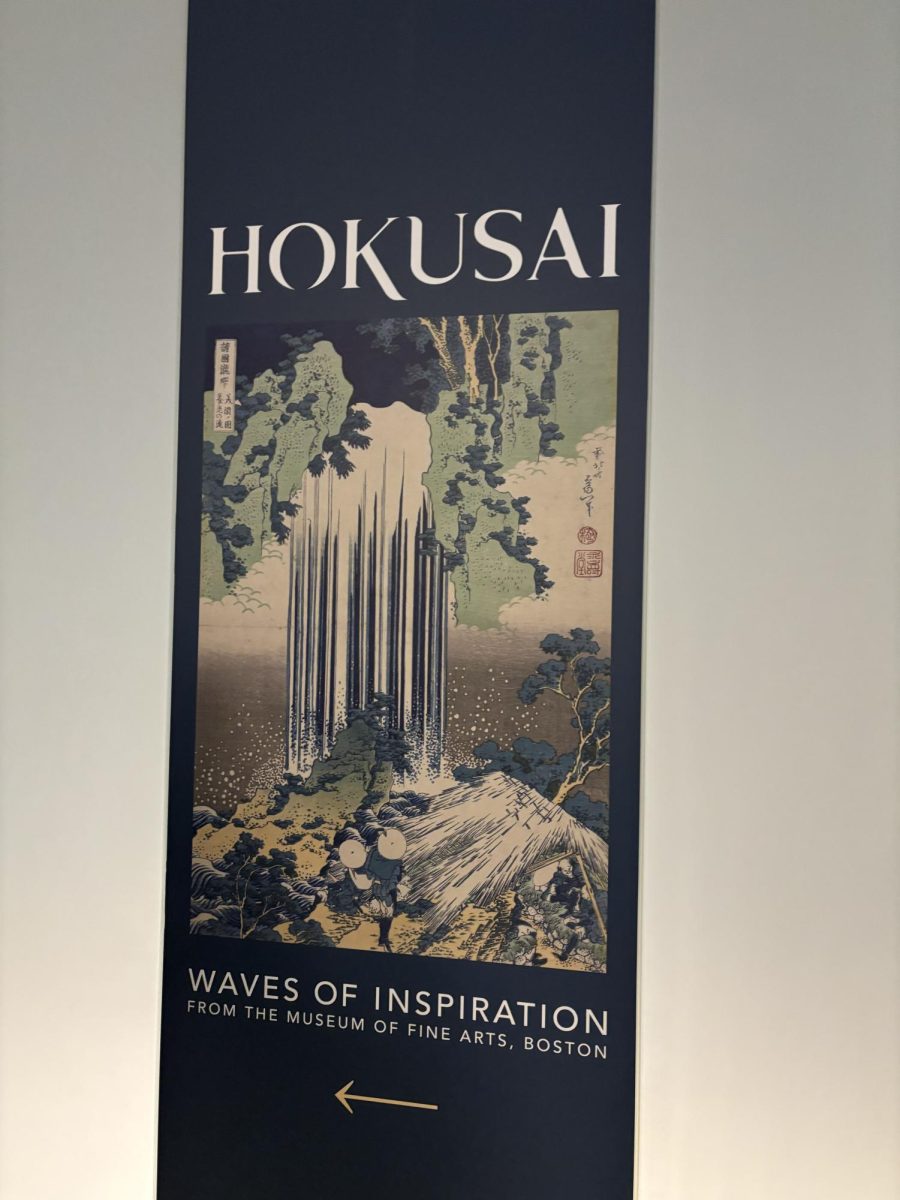One of the most iconic paintings of the last millennia and an inspiration for hundreds of others, Katsushika Hokusai’s Great Wave off Kanagawa is arguably one of the most recognizable paintings ever. From September 2024 to January 2025, the Nelson Atkins Art Museum had the Hokusai: Waves of Inspiration exhibit from the Boston Museum of Fine Arts. It features not only Hokusai’s works but also those of his disciples and those inspired by his paintings. This element allowed people to see different pieces inspired by his own.
For example, there was a Hokusai print titled Fine Wind, Clear Morning or Red Fuji(1832), and next to it were pieces inspired by it like Yoshimoto Nara’s White Fujiyama Ski Gelände, “In the Floating World”(1999), allowing the viewer to see the impact Hokusai has had on art even 167 years apart. Hokusai was alive during the Edo period or Tokugawa period in Japan; from 1603 to 1867, this era is considered the final period of traditional Japan with its peaceful growth and stability under the Shogunate. Hokusai took inspiration from many sources and was a versatile artist as he was involved heavily in the art circle of Edo(modern-day Tokyo). He is primarily known for his involvement in the ukiyo-e genre. Ukiyo-e translates to “pictures of the floating world” and is produced on woodblock prints. Each woodblock would be carved into an intricate design and then printed on paper with ink. Many designs were about female geishas/actresses, folk tales, landscapes, or simply daily life.
At the exhibit, they had demonstrations of how woodblock prints are made, allowing a more interactive experience to learn about the art forms, as well as a place for you to make your own digital woodblock print using common elements from ukiyo-e prints. Hokusai’s most famous print series, Thirty-six Views of Mount Fuji, which was extremely popular then and now, also was a huge proprietor of landscape ukiyo-e prints. The exhibit included many modern artists who took inspiration from him like Yoshimoto Nara and manga artist Koyoharu Gotouge, creator of Demon Slayer. Manga during Hokusai’s time was more just random sketches, as he had tons of notebooks filled with drawings. Nowadays, manga is graphic stories either published serially in a publication or a series of books. Mangas are usually the backbone of most animes and movies.
The exhibit had tons and tons of art from paintings to posters to Lego sculptures. You were able to see the gradual changes in art throughout the decades as pieces can reflect different eras. I liked that they had such a vast collection of pieces as you get to see many different artists’ interpretations of Hokusai’s work. There are pieces for everyone whether they like modern or classical art. You were able to learn about the history of ukiyo-e and its evolution. As a fan of history, I enjoyed being able to learn about ukiyo-e and see the artwork. Of course, it had the famous painting Great Wave off Kanagawa at the end. It was worth the long wait in line just for that painting as it was in a smaller room. It was a beautiful exhibit and worth the visit. I recommend visiting the exhibits the Nelson Atkins showcases because you can learn so much!


